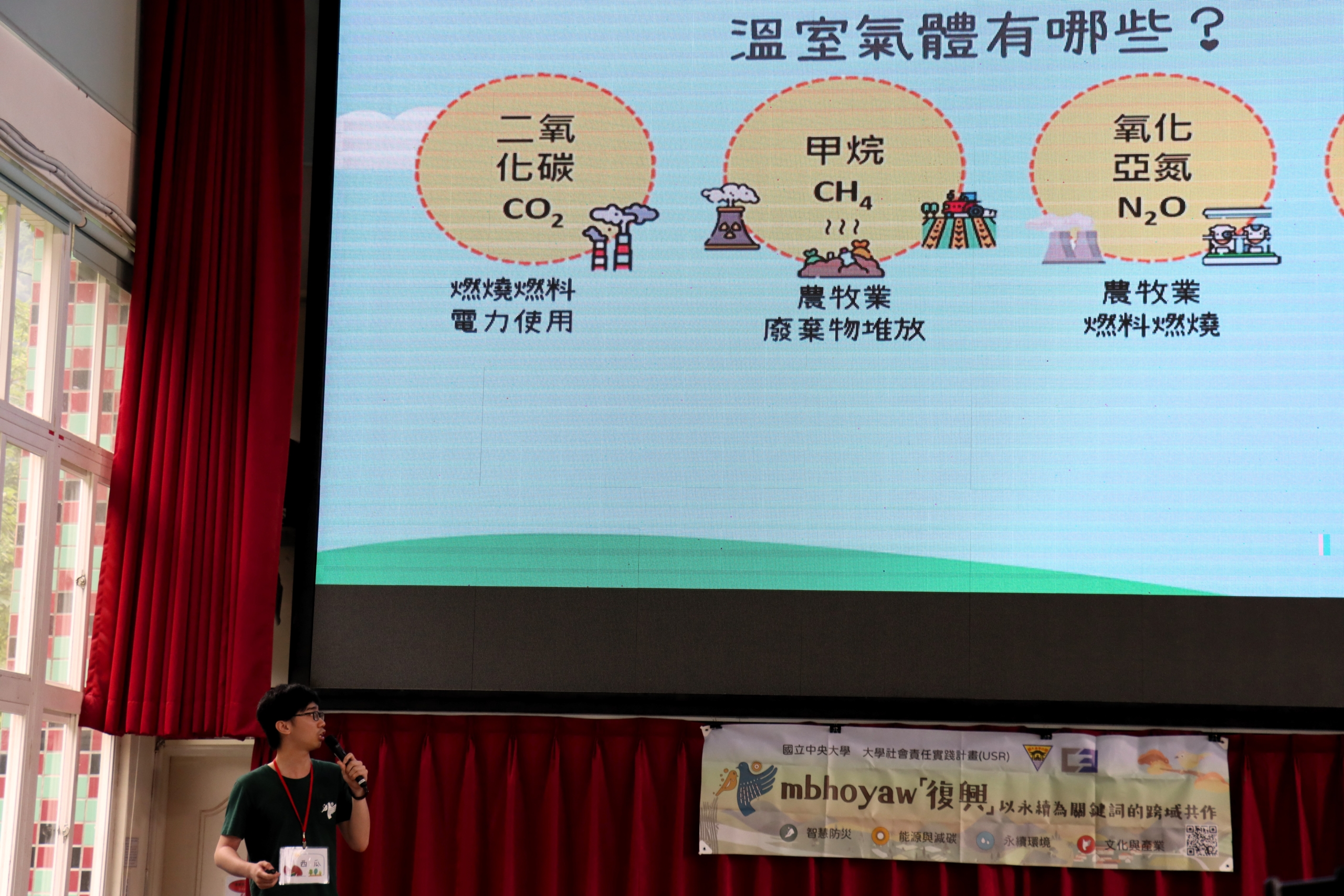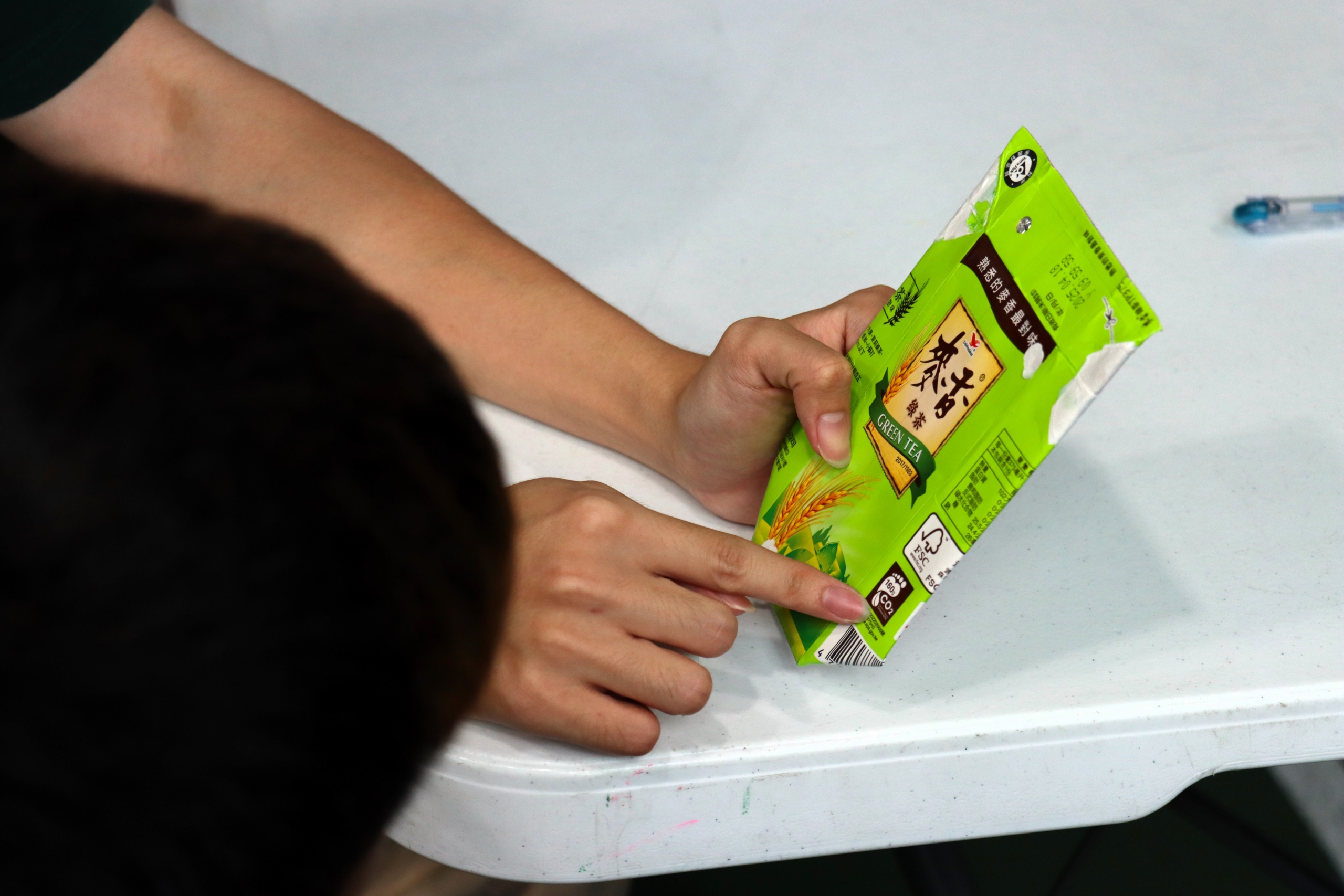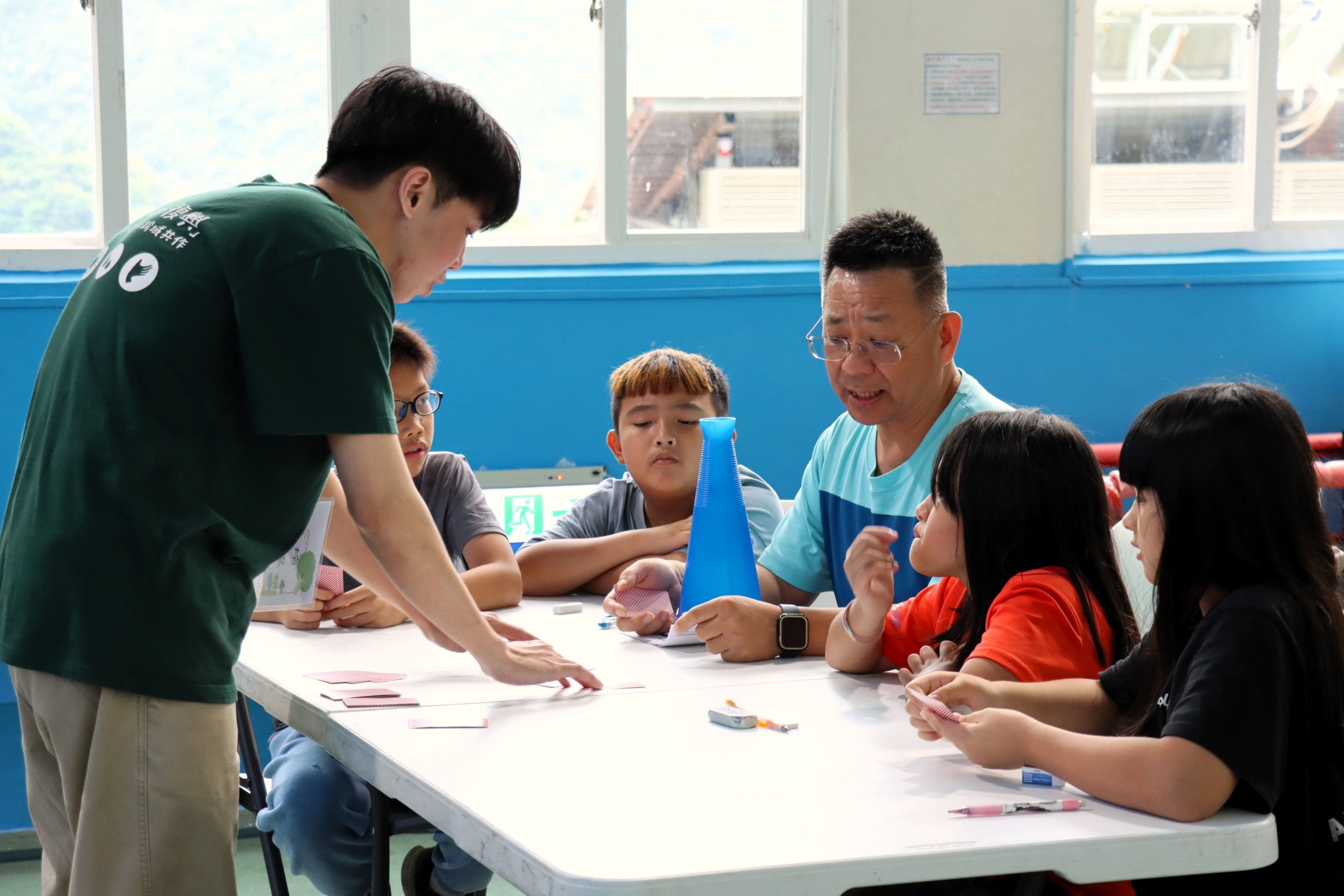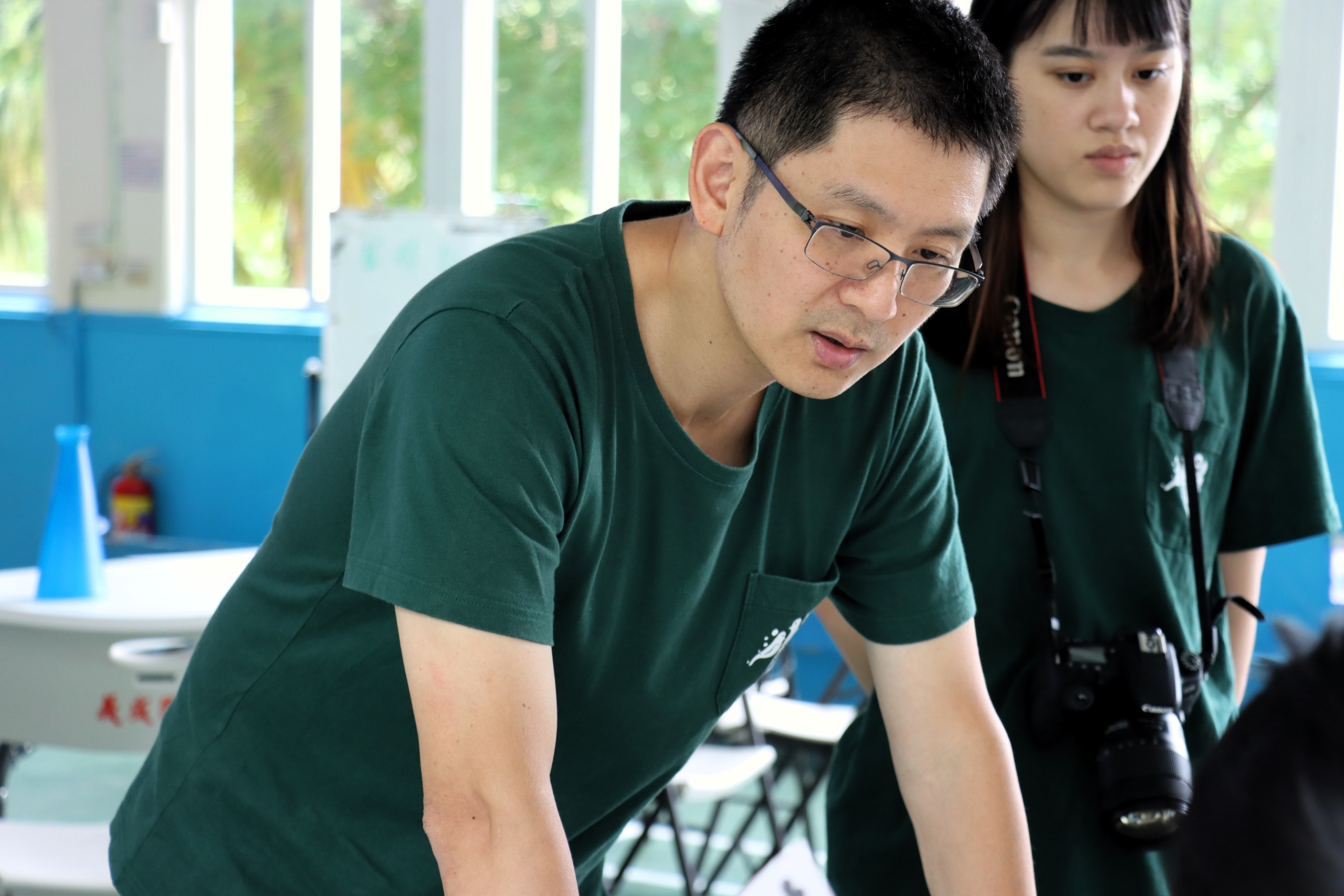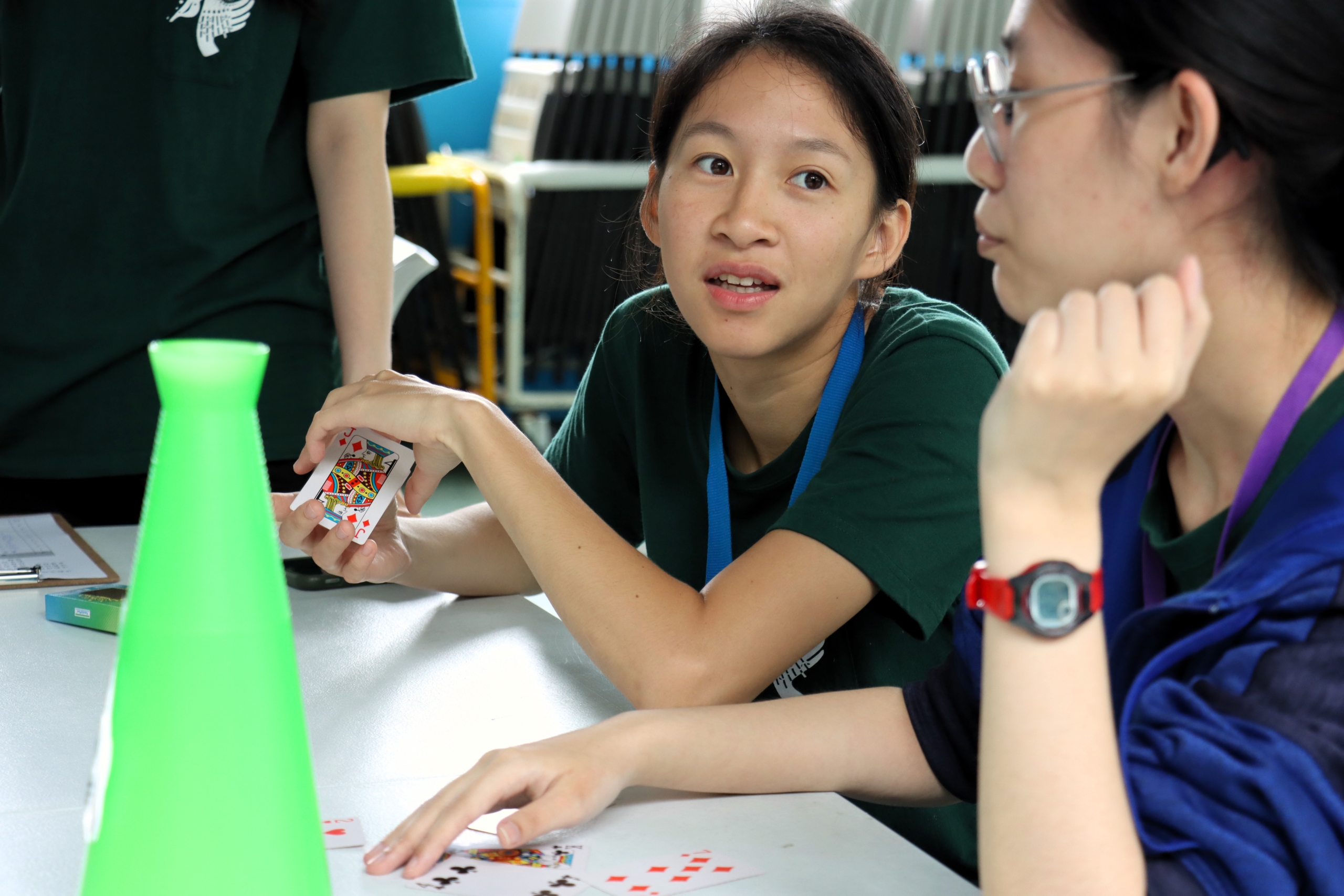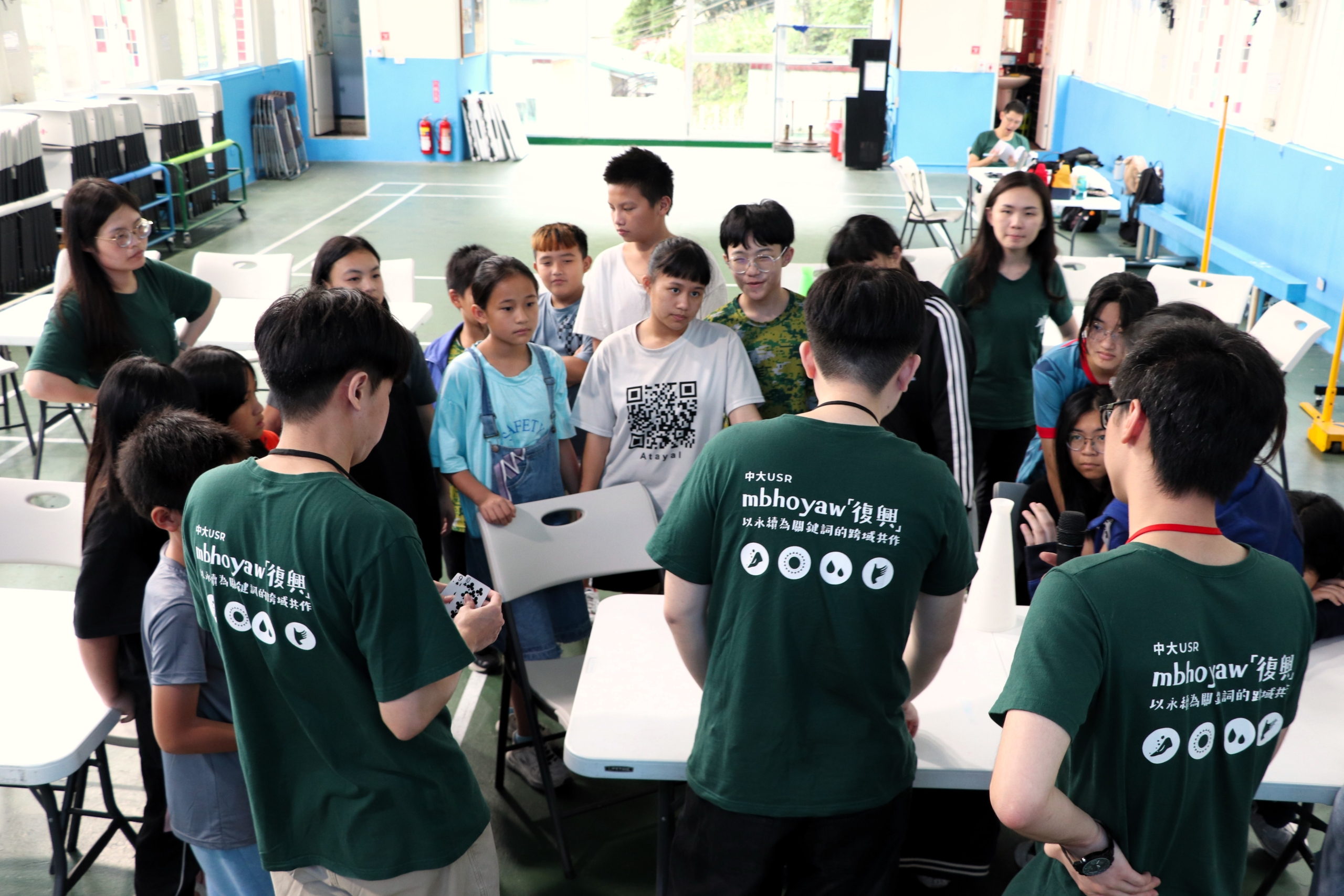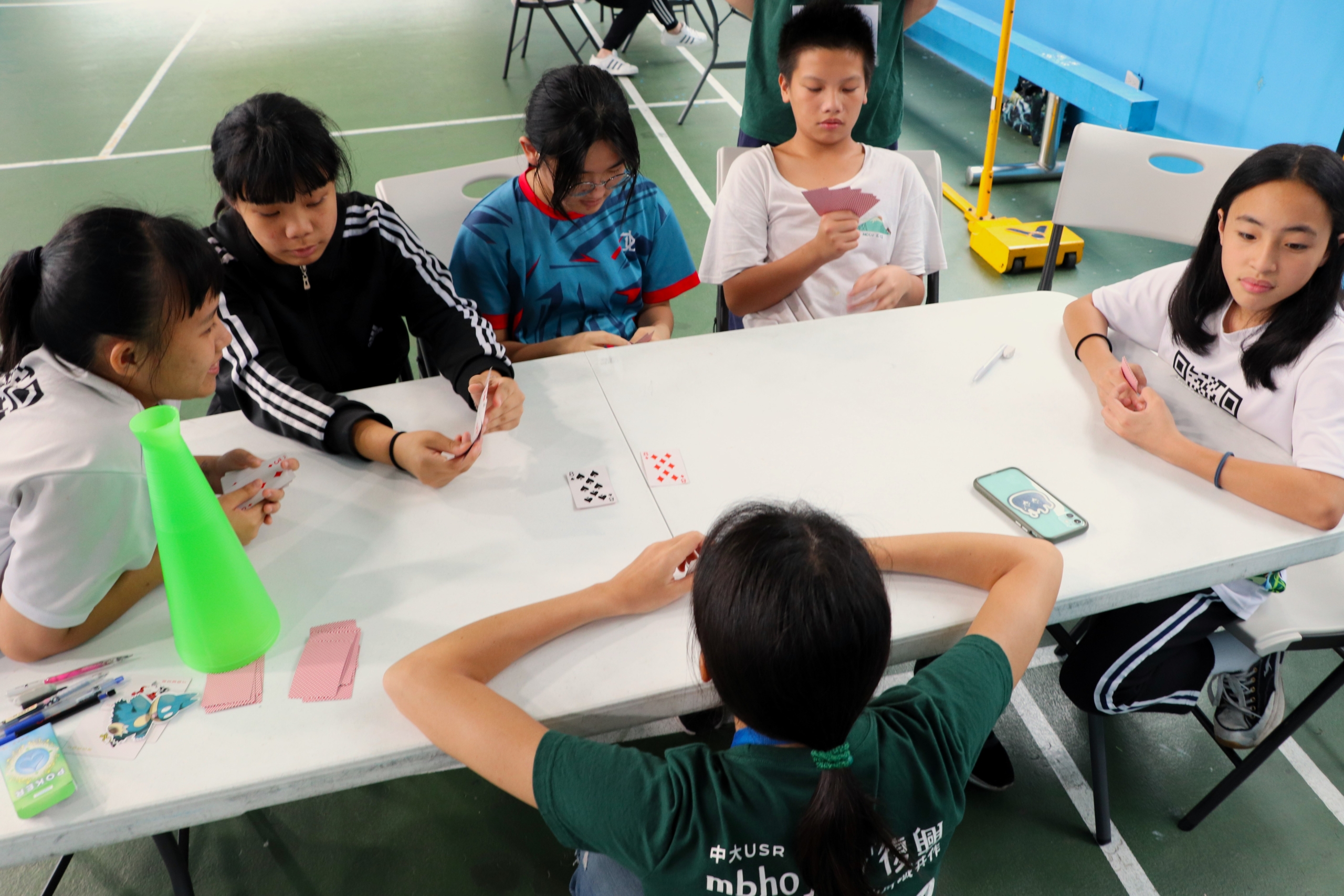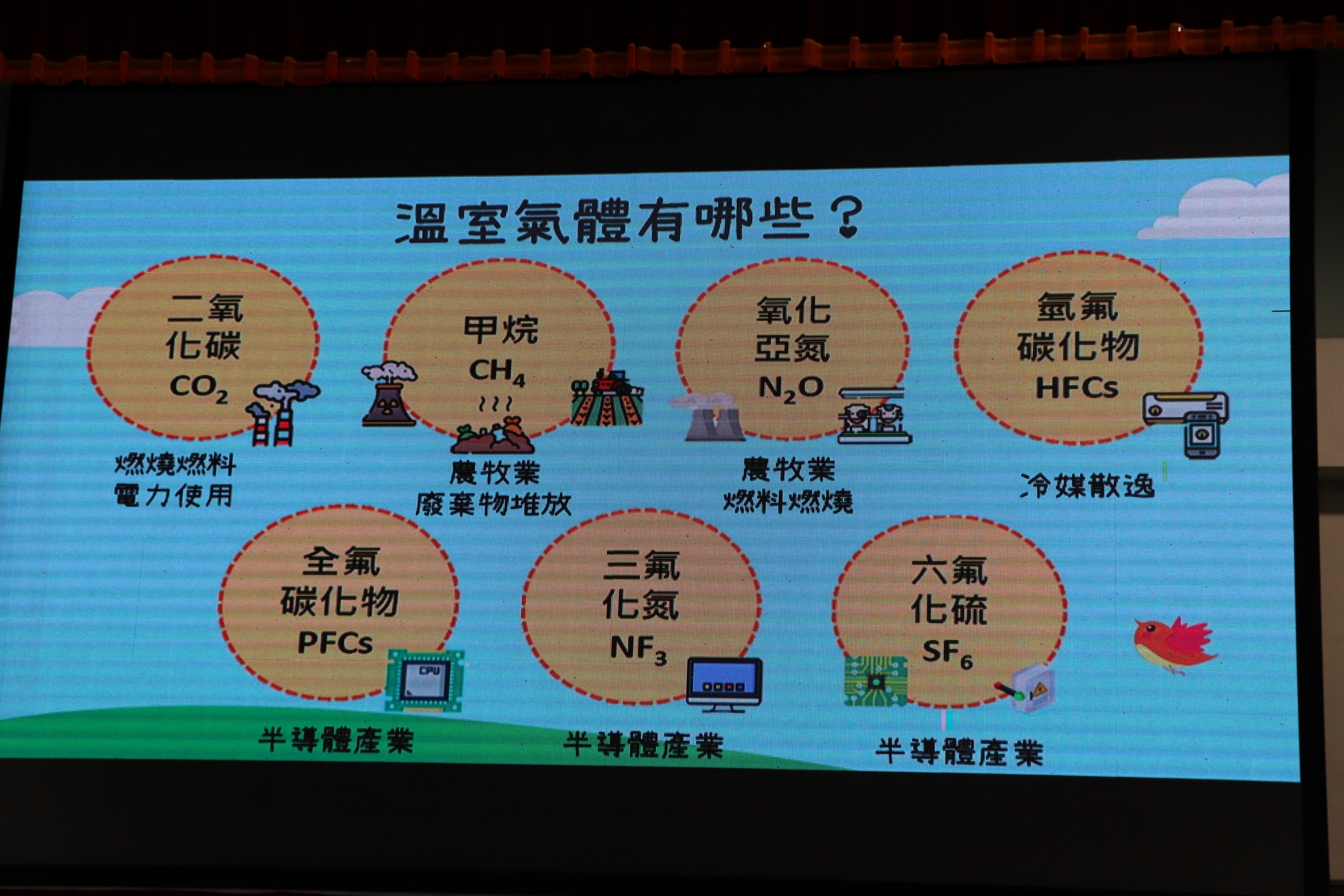Before setting off in the morning, the weather was a bit damp and cool due to the rain the night before. As we wound our way through the mountain roads of Fuxing District, despite the lingering heat, all discomfort disappeared when we arrived at Yisheng Elementary School. Upon entering the hall, we began preparing for today’s class on carbon emissions. To make the lesson more engaging, students from the Environmental Engineering Institute specially designed small games related to carbon emissions to make the principles easier to understand. Everyone took turns trying out the games, making minor adjustments based on feedback to ensure the activities would run smoothly.
Once the children were seated, the NCU student began explaining what carbon emissions are, using simple animations to illustrate the importance of reducing them. Through a Q&A session, the students learned about the composition of gases in the atmosphere, especially focusing on carbon dioxide, which was the main topic of the day. The discussion then turned to foods that contribute to high carbon emissions, which in turn cause irreversible damage to the planet. The speaker elaborated on the carbon emissions from eggs, beans, fish, and meat, compiling a chart ranking the emissions from the highest (beef) to pork, chicken, grains, and green vegetables. The visual chart, combined with food images, successfully captured the students’ attention, prompting many to enthusiastically raise their hands to answer questions, achieving both educational and entertaining goals.
The class continued with the theme of environmental protection, introducing various energy generation methods, particularly highlighting the pollution and external costs of thermal and nuclear power. The speaker also covered national policies on how to use natural resources for power generation. Given Taiwan’s limited land area and its surrounding oceans, most wind power stations are located along the western coast. The speaker also explained how solar and biomass energy operate. Following this, a series of questions were posed to the students, keeping them highly engaged. The Q&A format not only captured their attention but also gave the students a sense of achievement when answering questions, while allowing the instructor to gauge how much knowledge they had retained. The session achieved its intended goals and served as an excellent interactive teaching method.
Lastly, the discussion returned to carbon emissions, encouraging students to reduce environmental pollution by eating more vegetables and turning off lights, in order to prevent further irreversible harm to the future. In parallel with green actions, they could help slow global warming. The session concluded with a game designed by NCU students, in which the children used playing cards to calculate carbon increases and decreases, earning points for successfully eliminating emitted carbon.
During the awards ceremony, the atmosphere was lively and cheerful, with students cheering enthusiastically. At one point, two little girls asked me to take their picture. I noticed that the students at Yisheng Elementary School were very cheerful and not shy about interacting with us. Though our time together may not have been long, spending these special moments with them has left me with unforgettable memories.
Text by Su Zi-Ting
Editor by Li Ruo-Jia
Photos by Su Zi-Ting
Without realizing it, the final activity of the semester at Yisheng Elementary School had arrived. Alongside the teachers, students, and mentors from the team, we had journeyed through the seasons, capturing this year-long adventure through cameras and words. Time flies by so quickly—it feels like just yesterday we were winding through the lush mountain roads for the first time, and now we are bidding farewell to some familiar and lovable senior students.
The theme of this last activity for the semester was carbon emissions. Although the lesson lasted only an hour, it was packed with rich content. The students from NCU even brought a self-designed “carbon emission” board game, making the class more interactive and fun. The topic of today’s session provoked deep thought, as the calculation of carbon emissions and carbon credit allocation have become hot topics internationally.
The lesson began with a brief introduction to the concept of greenhouse gases. In addition to the familiar carbon dioxide, water vapor, and methane, the speaker introduced some gases from industrial emissions, such as hydrofluorocarbons, perfluorocarbons, sulfur hexafluoride, and nitrogen trifluoride. The speaker also shared the positive role of greenhouse gases—without them, Earth wouldn’t maintain a temperature suitable for human habitation. However, due to deforestation, livestock farming, and industrial emissions, these gases are being produced and released into the atmosphere in large quantities, leading to the absorption of excess heat and causing global warming.
“What can we do as members of the Earth to mitigate this problem?” When the speaker posed this question, many children eagerly raised their hands to answer. They suggested taking public transportation, eating more local fruits and vegetables, and planting more trees. I imagine it might be hard for children living in the forested mountains to picture the government having to promote tree planting and park construction to increase green coverage in concrete urban jungles.
The second half of the lesson was led by NCU students, who guided the children in playing the carbon emission board game. The game, based on playing cards, used black suits to represent carbon emissions and red suits to represent carbon offsets. The numbers on the cards indicated the amount of carbon emissions. The children sat in a circle, each receiving eight cards. The game master played the first card, and the children needed to cooperate to ensure the final carbon emission total was less than zero, meaning the total points of the red suits exceeded those of the black suits. Since they couldn’t see each other’s cards, the game not only tested their math skills but also their teamwork and luck.
The senior students quickly grasped the game rules and even played an extra round. The younger students seemed a bit lost, but with guidance from the director, they modified the game rules slightly. Each person played one card at a time, and on the count of three, they revealed their cards. If the total points of the red suits exceeded those of the black suits, the group scored points for that round. Regardless of the rules used, the children understood the concept of increasing and decreasing carbon emissions, and they spent an enjoyable afternoon playing the game.
The event concluded in a joyful atmosphere. As we said goodbye to the children, we were filled with both reluctance and happiness. Watching their energetic figures bouncing away, I felt like the children had rekindled my youthful energy, giving me a short yet valuable recharge amidst my busy academic life. I look forward to next semester’s activities and the day I get to see them again. The countdown begins as I eagerly await that moment.
Text by Cai Nian-Zhen
Editor by Li Ruo-Jia
Photos by Cai Nian-Zhen

